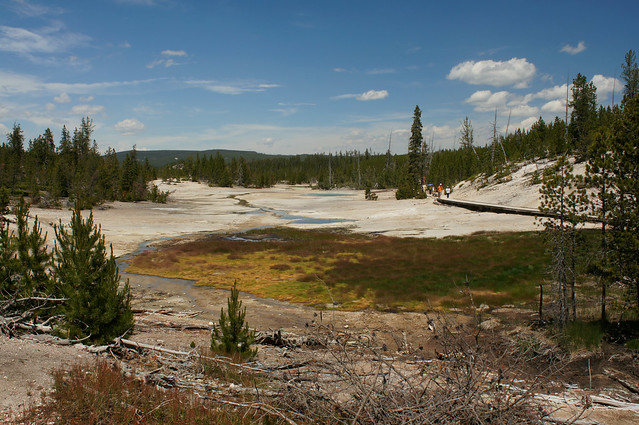 |
| Researchers worked with samples extracted from Norris Geyser Basin at Yellowstone National Park. (Tjflex2, CC BY-NC-ND-2.0) |
A team of researchers from the Pacific Northwest National Laboratory and DOE JGI, led by longtime DOE JGI collaborator Bill Inskeep of Montana State University, developed a conceptual model that details how microbial mats are formed in hot, acidic springs in the Yellowstone caldera.
The team sequenced DNA samples extracted from two acidic geothermal springs at various timepoints over two months in Norris Geyser Basin at Yellowstone National Park. The data allowed the team to track the formation of microbial mats, beginning with primary colonization by Hydrogenobaculum species and Metallosphaera yellowstonensis, and how these populations as well as those of other microbes that colonized later changed over time in response to availability of nutrients such as oxygen and carbon.
These studies continue to build on the decades of microbial field studies Inskeep and his team have done at Yellowstone National Park. The insights gained from this model, the team noted, could provide insights into microbial life at other hot springs ecosystems and, potentially, on other planets.
(Thanks to GRC Member Marcelo Lippmann, Staff Scientist (retired) at Lawrence Berkeley National Laboratory for the submission.)
Read More........